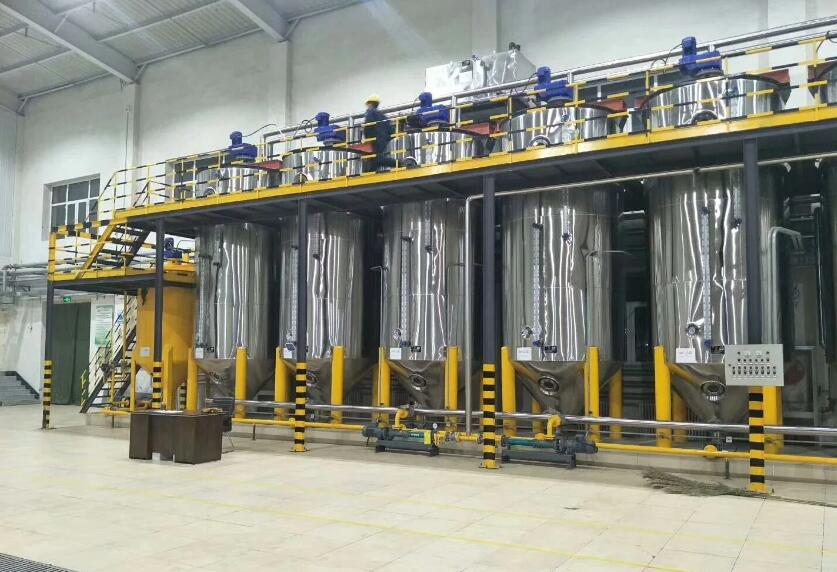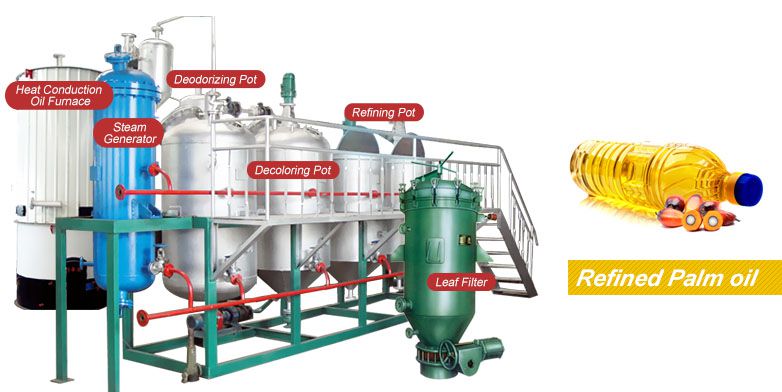
Manufacturing high quality and cost effective edible oil refining machine to help customers solve their needs for oil & grain processing is always our goal.
Recently, a client in Nigeria, has shipped a 20TPD palm kernel oil refining line from Our Machinery to its destination. Our dear customer, an agricultural equipment supplier, bought the line to set up a palm kernel oil refinery to develop the full market potential of the local palm oil refining business.

20 TPD Palm Oil Refining Production Processing in Nigeria

Working Principle of the Palm Oil Refining Production Line
Pre-treatment stage of Palm Oil Production Processing
- ► Palm fruit harvesting is the first step to processing palm oil.After harvesting,the fruits are sterilized and softened to prepare them for oil extraction from their pulp.
- ► The first step in the refining process is to separate the palm fruit into its various components such as kernels(nuts), fibers,shells,and waste material that are used for other purposes such as livestock feed or fuel production.
- ► The next step is to remove the oil from the fruit pulp by pressing it using mechanical presses,which squeeze out most of the plant fats.The remaining material is press cake which has a high protein content that you can use in animal feed or fertilizer production.At the same time, some parts can be recycled back into palm plantations as organic fertilizers or soil conditioners, depending on which country you intend to sell to.
The pretreatment stage mentioned above is the pressing of palm fruit to obtain the crude palm oil. The gross palm oil refining reaches the standard of edible oil by removing impurities. The main processes of palm oil refining are: gross oil, deacidification and degumming, decolorization, cooling and filtration.
Complete Palm Oil Refining Processes Step-by-step
Crude Oil→ Degumming→ Neutralization→ Bleaching→ Deodorization(optional)→ Fractionation→Finished Palm Oil
Brief description of 4 palm oil refining steps are as follows:
- Step 1: Put the crude oil into the refining tank, stirring quickly while heating with steam.
- Step 2: Add water to warm up, which is the most important stage of hydrolysis and degumming, to master the amount, temperature and speed of adding water. At the same time, add alkali to take off free fatty acid.
- Step 3: Add the quantitative decolorizing agent (activated white clay, activated carbon) into the decolorizing tank and continue to stir to warm up, then pump the mixture of oil and white clay into the filter to filter, that is, to complete the decolorization.
- Step 4: The decolorized palm oil is fed into the deodorized oil tank and the smell is removed using a steam generator.
After these steps are completed, the palm oil is left to cool in the original tanks and when the temperature drops to 80 degrees, they can be transported to storage tanks, thus obtaining the refined palm oil. Then, your palm oil refinery will produce an edible palm oil product with low free fatty acid levels suitable for human consumption. It will also contain antioxidants such as beta-carotene, which also makes it healthy!
To be successful in purchasing cost-effective palm oil refining equipment, you should learn more about setting up a palm oil refinery to conduct palm oil refining operations. ABC Machinery is one professional manufacturer and supplier of factory price edible oil making machines and best service from process design to after sale service.
Oil refinery process introduction:
Semi-continuous oil refinery has a main process which is different from batch type: that is deodorization.

- Deacidification/ Neutralization: Use NaOH to react with FFA inside oil. Then the reaction product soap stock will be discharged.
- De-gumming: Use hot water to mix with crude oil to remove the gum inside oil. Then dry the oil for bleaching process.
- Decoloration/Bleaching: Use the bleaching earth to take the impurities out. Then use the filter to remove the bleaching earth.
- Deodorization: This is the main different type from batch type oil refinery. It’s continuous type. We use the continuous deodorization tower to remove the peroxide value. Then there will be no serious smell in oil. After filtering, you will get final oil product.
Functions of Main Parts in Semi-continuous oil refinery
- Refining section: used for P-acid de-gumming, alkali refining de-acid and water rinsing.
- Decoloring section: used to remove pigments, bleaching oils and grease dehydrate.
- Deodorizing section: to remove the odor components off oil.
- Dewax: used to remove the wax off the oil, in order to get the high quality oil.
- Heat-transfer oil stove: supply each device that needs heat energy; temperature can reach above 280°C.
- Steam generator: produce steam for de-odoring and distillation.
- Vacuum pump: supply vacuum for dehydrate, de-color, de-odor. Vacuum degree can reach above 755mm Hg.
- Press filter: filter clay, filter out clear oil.
- Air compressor: blow dry bleached clay, blow empty the leftover oil in the press filter.
